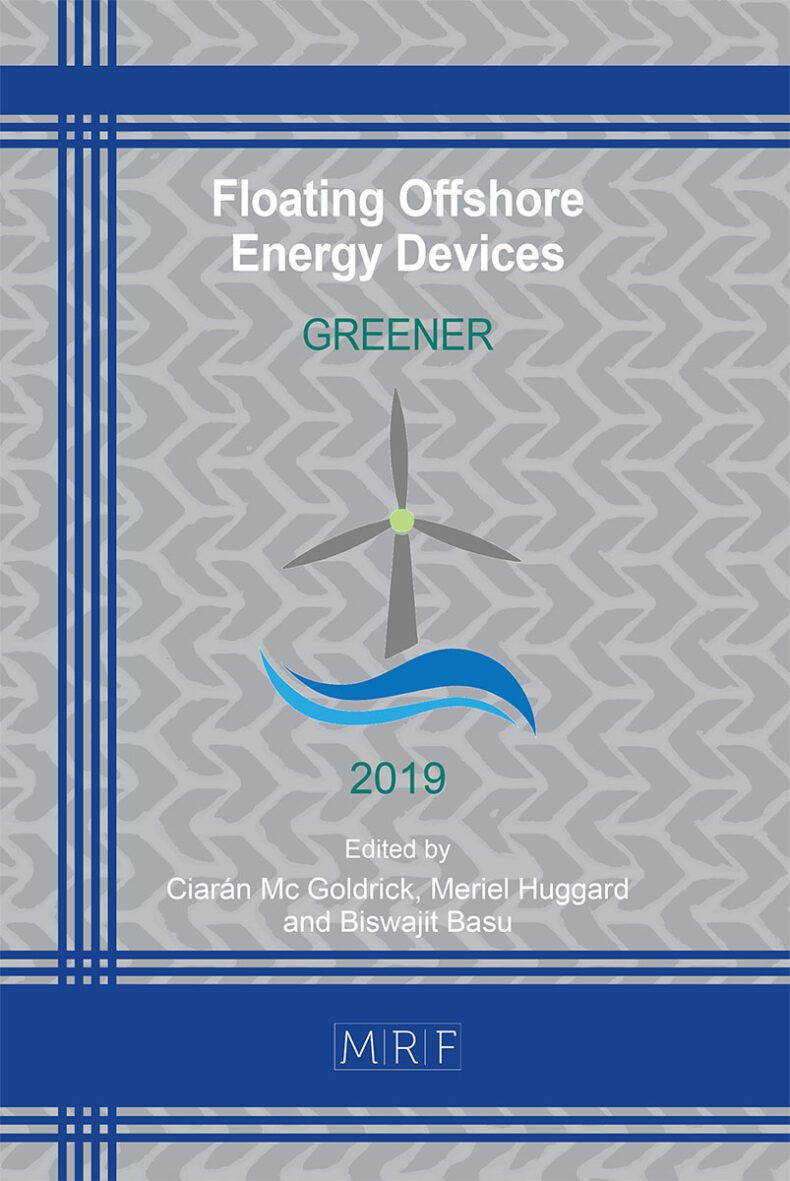Machine Learning for Wind Turbine Fault Prediction through the Combination of Datasets from Same Type Turbines
Cristian Bosch, Ricardo Simon Carbajo
download PDFAbstract. Early fault detection in wind turbines is key to reduce both costs and uncertainty in the generation of energy and operation of these structures. The isolation of many wind farms, especially those offshore, makes scheduled maintenance very costly and on many occasions inefficient. In addition, the downtime of these structures is typically long and a predictive solution is much needed to 1) help prepare for the maintenance procedure beforehand, for instance to avoid delays when waiting for the required resources and components for maintenance to be available and, 2) avoid the possibility of more destructive system failures. Predicting failures in such complex systems requires modeling of multiple components in isolation and as a whole. Physics-based and data-based models are used for this purpose, which have been proven useful in this regard. Specifically, Machine Learning algorithms are proven to be a valuable resource in a wide range of problems in this industry, however a solution capable of accurately predicting the range of faults of a particular type of wind turbine is still a challenge. In this paper, we will introduce the capabilities of machine learning for wind turbine fault prediction, as well as a technique to predict different types of faults. We will compare the performance of two well established machine learning algorithms (namely K-Nearest Neighbour and Random Forest classifiers) on real wind turbine data which have produced great levels of prediction accuracy. We also propose data augmentation methods to help enhance the training of ML models when wind turbine data is scarce by merging data from turbines of the same type.
Keywords
Predictive Maintenance, Wind Turbine, Machine Learning, Artificial Intelligence, Optimal Transport
Published online , 9 pages
Copyright © 2022 by the author(s)
Published under license by Materials Research Forum LLC., Millersville PA, USA
Citation: Cristian Bosch, Ricardo Simon Carbajo, Machine Learning for Wind Turbine Fault Prediction through the Combination of Datasets from Same Type Turbines, Materials Research Proceedings, Vol. 20, pp 47-57, 2022
DOI: https://doi.org/10.21741/9781644901731-7
The article was published as article 7 of the book Floating Offshore Energy Devices
![]() Content from this work may be used under the terms of the Creative Commons Attribution 3.0 licence. Any further distribution of this work must maintain attribution to the author(s) and the title of the work, journal citation and DOI.
Content from this work may be used under the terms of the Creative Commons Attribution 3.0 licence. Any further distribution of this work must maintain attribution to the author(s) and the title of the work, journal citation and DOI.
References
[1] WindEurope; Wind energy in Europe in 2018 – Trends and statistic, 2019.
[2] Sara Verbruggen; Onshore Wind Power Operations and Maintenance to 2018. ENDSIntelligence, 2016.
[3] Feng, Y.; Tavner, P.; Long, H. Early experiences with UK round 1 offshore wind farms. Proc. Inst. Civ. Eng., 2010, 163, 167–181. https://doi.org/10.1680/ener.2010.163.4.167
[4] Cunningham, Padraig & Delany, Sarah; k-Nearest neighbour classifiers, 2007, Mult Classif Syst.
[5] J. J. Rodriguez, L. I. Kuncheva and C. J. Alonso; “Rotation Forest: A New Classifier Ensemble Method,” in IEEE Transactions on Pattern Analysis and Machine Intelligence, 2006, vol. 28, no. 10, pp. 1619-1630. https://doi.org/10.1109/TPAMI.2006.211
[6] Z. Hameed, Y.S. Hong, Y.M. Cho, S.H. Ahn, C.K. Song; Condition monitoring and fault detection of wind turbines and related algorithms: A review, Renewable and Sustainable Energy Reviews, Volume 13, Issue 1, 2009, Pages 1-39B. https://doi.org/10.1016/j.rser.2007.05.008
[7] Hongshan Zhao, Huihai Liu, Wenjing Hu, Xihui Yan; Anomaly detection and fault analysis of wind turbine components based on deep learning network, Renewable Energy, Volume 127, 2018, Pages 825-834. https://doi.org/10.1016/j.renene.2018.05.024
[8] Mazidi, Peyman & Bertling Tjernberg, Lina & Sanz-Bobi, Miguel; Performance analysis and anomaly detection in wind turbines based on neural networks and principal component analysis, Conference: 12th Workshop on Industrial Systems and Energy Technologies, 2017.
[9] Felgueira, T., Rodrigues, S., Perone, C.~S., et al.; 2019, arXiv e-prints, arXiv:1906.12329.
[10] Shihavuddin, A & Chen, Xiao & Fedorov, Vladimir & Riis, Nicolai & Nymark Christensen, Anders & Branner, Kim & Bjorholm Dahl, Anders & Reinhold Paulsen, Rasmus; Wind Turbine Maintenance Cost Reduction by Deep Learning Aided Drone Inspection Analysis, 2019. https://doi.org/10.20944/preprints201901.0281.v1
[11] Anantrasirichai, Nantheera & Bull, David; DefectNET: multi-class fault detection on highly-imbalanced datasets, 2019, arXiv e-prints, arXiv:1904.00863. https://doi.org/10.1109/ICIP.2019.8803305
[12] Abderrahmane, Mokhtari \& Belkheiri, Mohammed; Fault Diagnosis of a Wind Turbine Benchmark via Statistical and Support Vector Machine. International Journal of Engineering Research in Africa, 2018, 37. 29-42. https://doi.org/10.4028/www.scientific.net/JERA.37.29
[13] D. Zhang, L. Qian, B. Mao, C. Huang, B. Huang and Y. Si; “A Data-Driven Design for Fault Detection of Wind Turbines Using Random Forests and XGboost,”, 2018, IEEE Access, vol. 6, pp. 21020-21031. https://doi.org/10.1109/ACCESS.2018.2818678
[14] F. Cheng, J. Wang, L. Qu and W. Qiao; “Rotor current-based fault diagnosis for DFIG wind turbine drivetrain gearboxes using frequency analysis and a deep classifier,” 2017, 2017 IEEE Industry Applications Society Annual Meeting, Cincinnati, OH, pp. 1-9. https://doi.org/10.1109/IAS.2017.8101844
[15] Villani, Cédric. Optimal transport: old and new. Vol. 338. Springer Science & Business Media, 2008.
[16] Rémi Flamary and Nicolas Courty, POT Python Optimal Transport library, Website: https://pythonot.github.io/, 2017.
[17] Pedregosa, F. and Varoquaux, G. and Gramfort, A. and Michel, V. and Thirion, B. and Grisel, O. and Blondel, M. and Prettenhofer, P.and Weiss, R. and Dubourg, V. and Vanderplas, J. and Passos, A. and Cournapeau, D. and Brucher, M. and Perrot, M. and Duchesnay, E.; Scikit-learn: Machine Learning in Python, Journal of Machine Learning Research, 2012, Volume 12, pages 2825-2830.
[18] Ali, Jehad, et al. Random forests and decision trees. International Journal of Computer Science Issues (IJCSI), 2012, vol. 9, no 5, p. 272.































